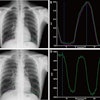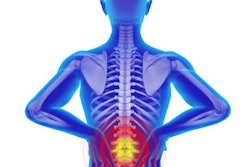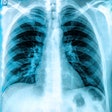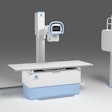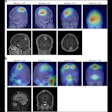Only 10% of patients who present to emergency departments with lacerations have clinically relevant new findings detected on x-rays, researchers have reported.
The finding is from an analysis of 869 x-rays ordered at two urban hospitals over a year and supports a shift toward more selective imaging criteria, noted corresponding author Ernest Ekpo, PhD, of the University of Sydney, and colleagues.
“Implementing guidelines that reserve radiographs for cases with clear diagnostic value could reduce unnecessary imaging, lower patient radiation exposure, and optimize healthcare resources,” the group wrote. The study was published June 16 in Radiography.
In the U.S., lacerations account for 8% of emergency department visits, and in Australia, it has been estimated that 31% of hand and wrist presentations are due to lacerations, the authors noted. X-rays are the primary imaging choice for lacerations due to their accessibility, low cost, low radiation dose, and prompt reporting.
However, while x-rays can provide opportunities for physicians to assess bone injuries and localize foreign bodies in deep wounds, in the absence of imaging guidelines, there is widespread use of x-rays for all lacerations, the researchers added.
Hence, to assess whether x-rays are necessary or overused in these settings, the group conducted a retrospective cross-sectional study and analyzed 869 laceration-related records. Patients were between the ages of 2 and 97, with half between the ages of 20 and 40. The number of male patients (n = 581) was double the number of female patients (n = 288).
Finger and hand imaging requests accounted for more than half of the sample, with only one case each for lateral airways, chest, shoulder, orbits, and hip. The most frequent clinical reason for imaging was the retention of foreign bodies and queries related to fracture assessment. Approximately half of the cases (n = 403) did not include any clinical questions, the group noted.
According to the analysis, in total, 10% (n = 90/869) of the x-rays performed for lacerations showed a positive or new abnormal finding, and 7% (n = 61/869) showed suspicious or inconclusive findings.
Fractures were found in 7% of cases (n = 59/869) and foreign bodies were found in 3% (n = 28/869). However, there were more inconclusive or suspected findings of foreign bodies than confirmed cases, and request forms with no clear mechanism of injury (n = 316) had the lowest proportion of clinically significant findings, the authors reported.
“The findings indicate that most of the radiographs provided no new information or only confirmed findings already evident from clinical examinations, such as visible soft tissue lacerations and swelling,” the group wrote.
Ultimately, the low yield may reflect limitations in pre-imaging clinical assessment or physical examinations, with nearly half of the imaging requests lacking specific clinical questions, and more than a third of the cases providing insufficient information about the mechanism of injury, the researcher added.
“While this may not mean a thorough examination was not undertaken, physical exams help clinicians to effectively narrow down the subset of patients who may genuinely benefit from radiographic imaging, thereby limiting unnecessary imaging for cases where it is unlikely to provide meaningful diagnostic insight,” they wrote.
Future research should be geared toward developing evidence-based protocols to guide clinical decision-making in laceration management, the group concluded.
The full study is available here.

